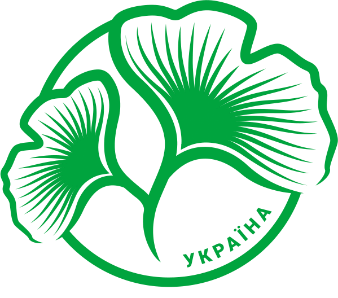COMPUTER MODELLING OF MULTI-PULSE LASER IMPACT ENSURING THE PRESERVATION OF THE ORIGINAL MICROSTRUCTURE
Abstract
This paper analyses the capabilities of multi-pulse femtosecond laser processing of structured surfaces while preserving their microstructure. The effect of laser irradiation on a pre-formed micro-relief of AISI 321 stainless steel containing LIPSS (Laser-Induced Periodic Surface Structure) is examined. It is shown that uncontrolled deformations of the microrelief can be caused by intense material destruction, re-deposition of particles, or uncontrolled melting. Emphasis is placed on maintaining the temperature below the melting point to prevent damage to the microstructure beyond the target. Key parameters of laser radiation influencing the dynamics of surface changes are identified. A computer simulation method based on a two-temperature heat model is proposed to predict temperature distribution and ablation mechanisms. The specifics of thermal impact on the material during multi-pulse laser processing are analyzed, including the calculation of electron energy states and their influence on the material's atomic lattice. It is demonstrated that the developed model enables the determination of threshold values for pulse energy, at which the required accuracy in forming indentations without unwanted defects is achieved. It is confirmed that using a femtosecond laser with a high pulse repetition rate ensures an even distribution of thermal energy, minimizing the risk of overheating and microstructure damage. Attention is drawn to the possibility of controlling processing parameters through pulse frequency, power, and duration variations, which allows for high-precision microstructuring. The simulation allows for optimizing laser impact parameters, reducing energy consumption, and improving process efficiency. It is shown that defining critical threshold levels of laser pulse power helps prevent microstructure destruction and ensures stable formation of the desired micro-relief. The results can be applied to enhance laser processing techniques for various materials, including metals with low thermal conductivity. Future research prospects are associated with expanding the capabilities of computer modeling to predict the impact of laser radiation on a wide range of materials. The proposed approach supports higher accuracy and controllability in laser microstructuring processes, which is important for industrial applications in the aerospace and mechanical engineering sectors.
References
2. Bonse, J., R. Koter, Manfred Hartelt, D. Spaltmann, Pentzien, S., S. Höhm, Rosenfeld, A. B., & Jan-Kristian Krüger. (2014). Femtosecond laser-induced periodic surface structures on steel and titanium alloy for tribological applications. 117(1), 103–110. https://doi.org/10.1007/s00339-014-8229-2
3. Demir, A. G., Fortunato, A., & Zaeh, M. F. (2024). Editorial. Lasers in Manufacturing and Materials Processing, 11(1), 1–2. https://doi.org/10.1007/s40516-024-00249-6
4. Dobrotvorskiy Sergey, Aleksenko, B. A., Mikołaj Kościński, Yevheniia Basova, & Vadym Prykhodko. (2023). Modeling and Surface Modification of AISI 321 Stainless Steel by Nanosecond Laser Radiation. Lecture Notes in Mechanical Engineering, 205–215. https://doi.org/10.1007/978-3-031-32767-4_20
5. Guillaume Savriama. (2021, July 9). TUTORIAL: TWO TEMPERATURE MODEL FOR ULTRASHORT PULSE LASER WITH COMSOL MULTIPHYSICS. https://doi.org/10.13140/RG.2.2.24211.81449.
6. Gnilitskyi, I., Rota, A., Gualtieri, E., Valeri, S., & Orazi, L. (2019). Tribological Properties of High-Speed Uniform Femtosecond Laser Patterning on Stainless Steel. Lubricants, 7(10), 83. https://doi.org/10.3390/lubricants7100083
7. Gurevich, E. L., Levy, Y., Gurevich, S. V., & Bulgakova, N. M. (2017). Role of the temperature dynamics in formation of nanopatterns upon single femtosecond laser pulses on gold. Physical Review. B./Physical Review. B, 95(5). https://doi.org/10.1103/physrevb.95.054305
8. Hill, M., & Wagenaars, E. (2022). Modelling of Plasma Temperatures and Densities in Laser Ablation Plumes of Different Metals. Photonics, 9(12), 937–937. https://doi.org/10.3390/photonics9120937
9. Ivanov, D., & Zhigilei, L. V. (2003). Combined atomistic-continuum modeling of short-pulse laser melting and disintegration of metal films. 68(6). https://doi.org/10.1103/physrevb.68.064114
10. Jiang, L., Wang, A.-D., Li, B., Cui, T.-H., & Lu, Y.-F. (2017). Electrons dynamics control by shaping femtosecond laser pulses in micro/nanofabrication: modeling, method, measurement and application. Light: Science & Applications, 7(2), 17134–17134. https://doi.org/10.1038/lsa.2017.134
11. J.G.A.B. Simões, Riva, R., & Miyakawa, W. (2018). High-speed Laser-Induced Periodic Surface Structures (LIPSS) generation on stainless steel surface using a nanosecond pulsed laser. Surface & Coatings Technology, 344, 423–432. https://doi.org/10.1016/j.surfcoat.2018.03.052
12. Francesca Di Niso, Gaudiuso, C., Sibillano, T., Francesco Paolo Mezzapesa, Ancona, A., & Pietro Mario Lugarà. (2014). Role of heat accumulation on the incubation effect in multi-shot laser ablation of stainless steel at high repetition rates. Optics Express, 22(10), 12200–12200. https://doi.org/10.1364/oe.22.012200.
13. Kim, J. H., & Choi, H. W. (2024). Review on Principal and Applications of Temporal and Spatial Beam Shaping for Ultrafast Pulsed Laser. Photonics, 11(12), 1140. https://doi.org/10.3390/photonics11121140
14. Kristensen, A., Yang, J. K. W., Bozhevolnyi, S. I., Link, S., Nordlander, P., Halas, N. J., & Mortensen, N. A. (2016). Plasmonic colour generation. Nature Reviews Materials, 2(1). https://doi.org/10.1038/natrevmats.2016.88
15. Li, X., & Guan, Y. (2020). Theoretical fundamentals of short pulse laser–metal interaction: A review. Nanotechnology and Precision Engineering, 3(3), 105–125. https://doi.org/10.1016/j.npe.2020.08.001.
16. Lin, X., Liang, C., Li, Y., Geng, Y., Chen, Z., Zhao, Y., Chen, X., Wu, J., & Wu, S. (2024). Review: Laser shock processing technique on the additive manufactured metallic alloys. Journal of Laser Applications, 36(3). https://doi.org/10.2351/7.0001411
17. Martínez, E., Lejeune, N., Frechilla, J., Porta-Velilla, L., Fourneau, E., Angurel, L. A., de, F., Bonse, J., Silhanek, A. V., & Badía-Majós, A. (2024). Laser engineered architectures for magnetic flux manipulation on superconducting Nb thin films. Applied Surface Science, 161214–161214. https://doi.org/10.1016/j.apsusc.2024.161214
18. Dobrotvorskiy S., Aleksenko1 B., Basova1 Y., Gnilitskyi Ia., Zawadzki P. and Kościński M. (2024). Mechanism of LIPSS formation under the influence of plasma lens during femtosecond laser processing. International Journal of Mechatronics and Applied Mechanics, I(18). https://doi.org/10.17683/ijomam/issue18.1
19. Miyagawa, R., Kamibayashi, D., Nakamura, H., Hashida, M., Zen, H., Somekawa, T., Matsuoka, T., Ogura, H., Sagae, D., Seto, Y., Shobu, T., Tominaga, A., Eryu, O., & Ozaki, N. (2022). Crystallinity in periodic nanostructure surface on Si substrates induced by near- and mid-infrared femtosecond laser irradiation. Scientific Reports, 12(1). https://doi.org/10.1038/s41598-022-25365-1
20. Rebollar, E., Castillejo, M., & Ezquerra, T. A. (2015). Laser induced periodic surface structures on polymer films: From fundamentals to applications. European Polymer Journal, 73, 162–174. https://doi.org/10.1016/j.eurpolymj.2015.10.012
21. Rudenko, A., Mauclair, C., Garrelie, F., Stoian, R., & Jean-Philippe Colombier. (2019). Amplification and regulation of periodic nanostructures in multipulse ultrashort laser-induced surface evolution by electromagnetic-hydrodynamic simulations. Physical Review. B./Physical Review. B, 99(23). https://doi.org/10.1103/physrevb.99.235412

 ISSN
ISSN  ISSN
ISSN 



